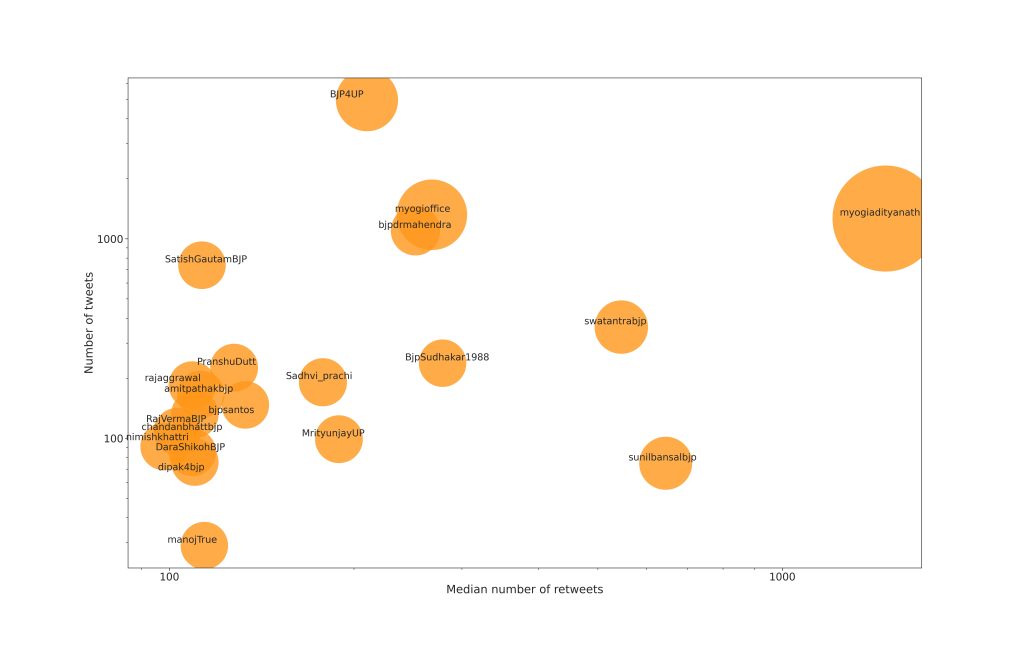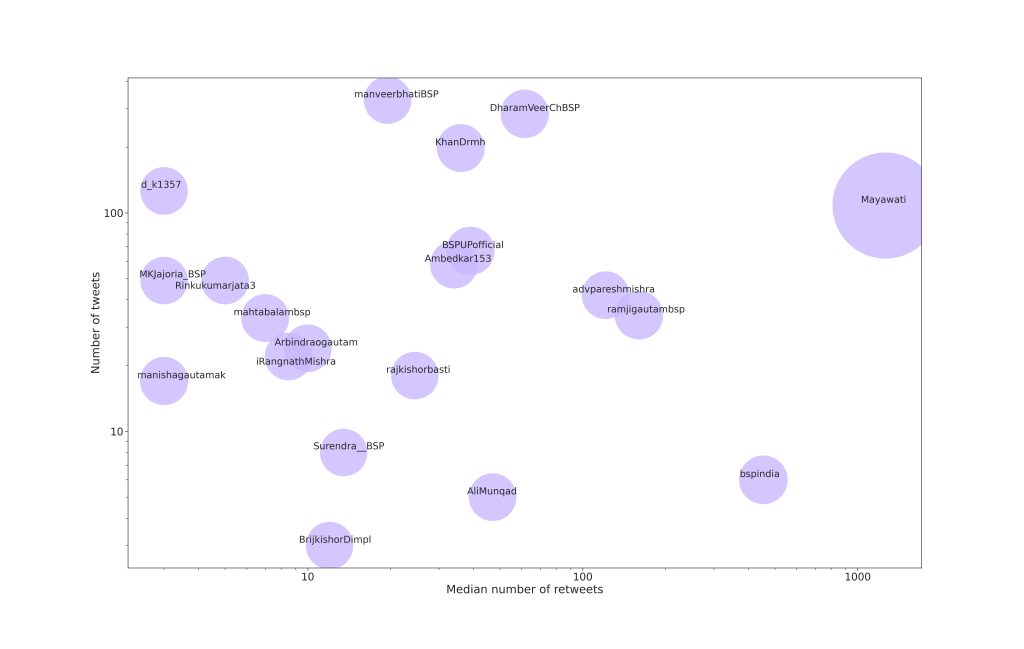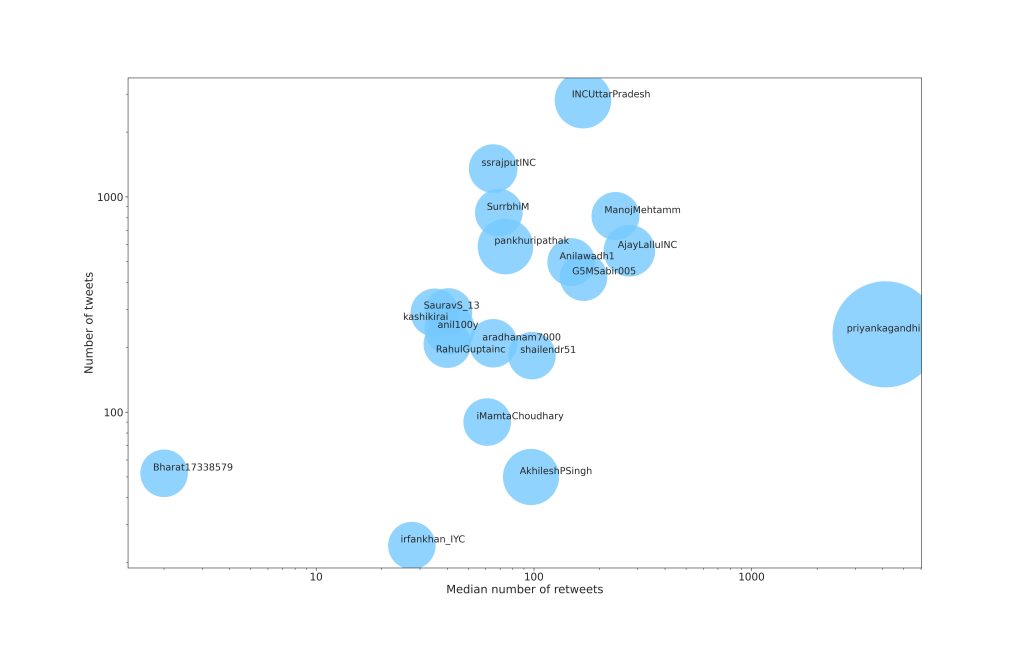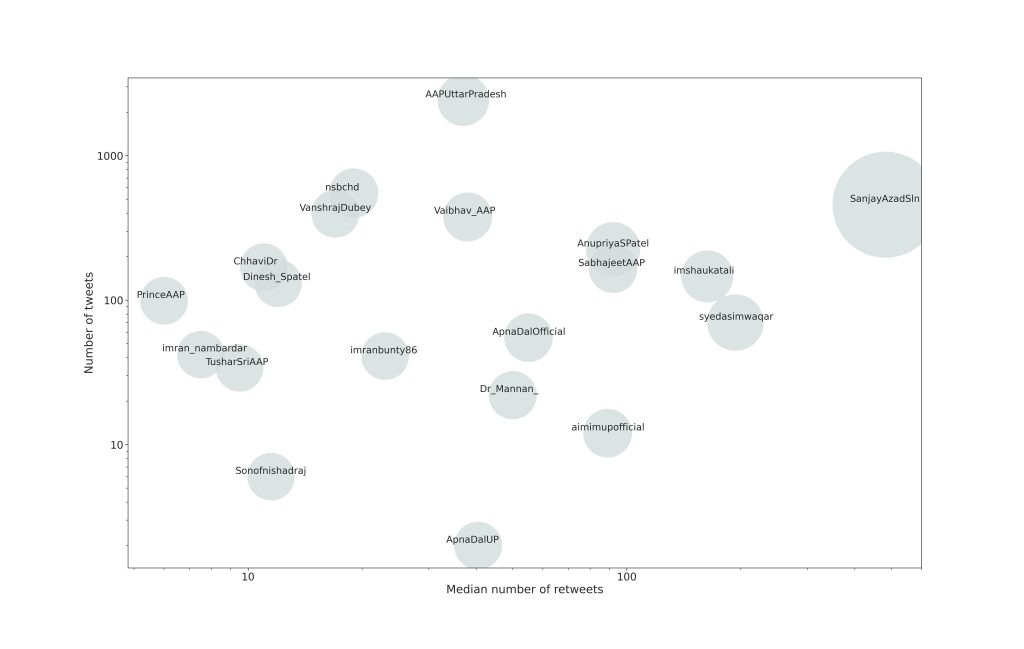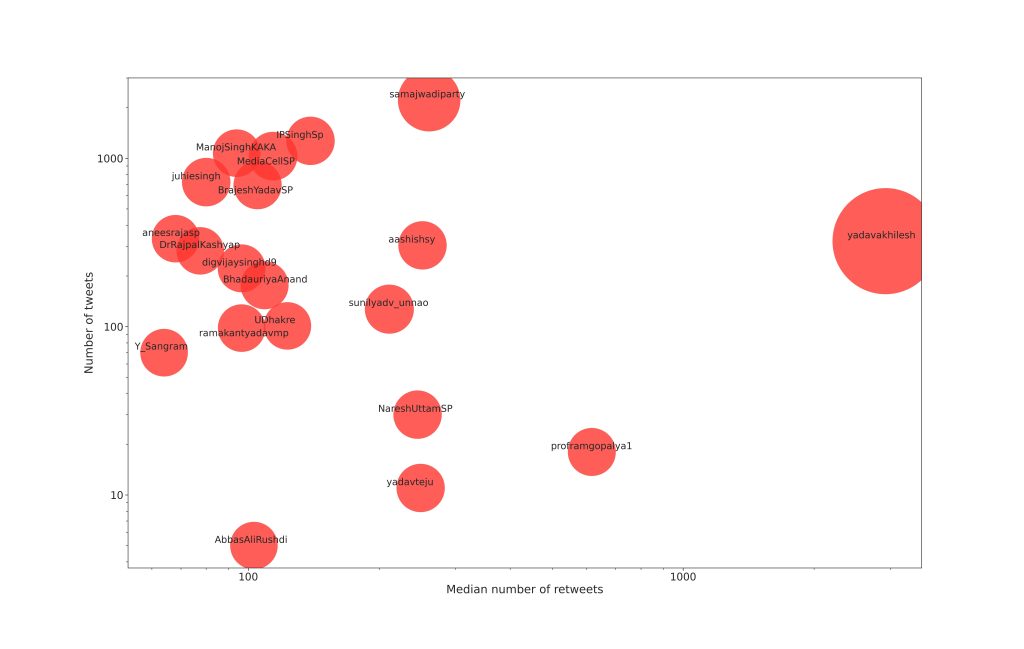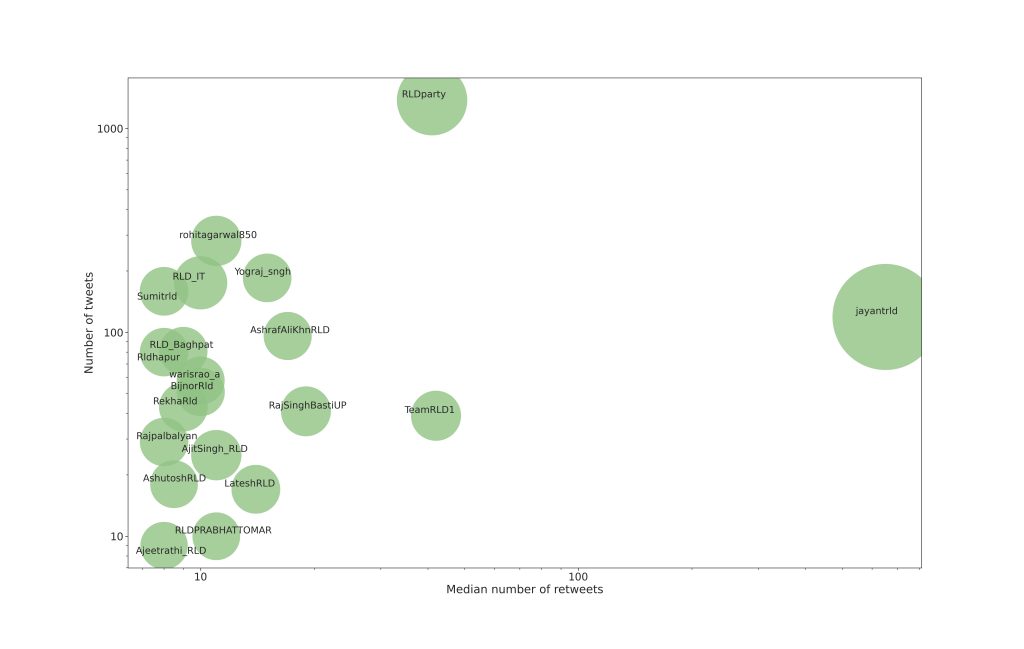Uttar Pradesh Elections and Twitter: The Cast of Characters
The Uttar Pradesh elections are being fought on social media just as much as they are in the physical spaces of the campaign. While messages forwarded on WhatsApp are a significant piece of what drives peoples’ political opinions, with every major party investing in building WhatsApp groups of supporters and likely voters, and flooding them with outreach material, the primary means of official branding continues to be Twitter for most of the parties and major leaders within the parties.
Over the coming weeks, a collaboration between the University of Michigan and IIIT-Hyderabad will analyse the use of social media by politicians on various aspects of the electoral campaign in Uttar Pradesh. As a starting point, we are releasing the methodology and an introduction to the key players and parties. In addition, we will provide an interactive dashboard for users to visualize trends and analyze the performance of various parties and candidates. This is the first in a series of blogposts on the interesting narratives shaping up online. We will also be making the data public in coming weeks.
Key players
We visualised the key players across parties based on their following and appeal in the state. First, we look at a visualisation of those politicians who are actively part of the election either in their party roles (such as general secretary or in-charge for elections) or as MLA candidates or hopefuls. We excluded sitting MPs, except those actively part of the process for ease of visualisation.
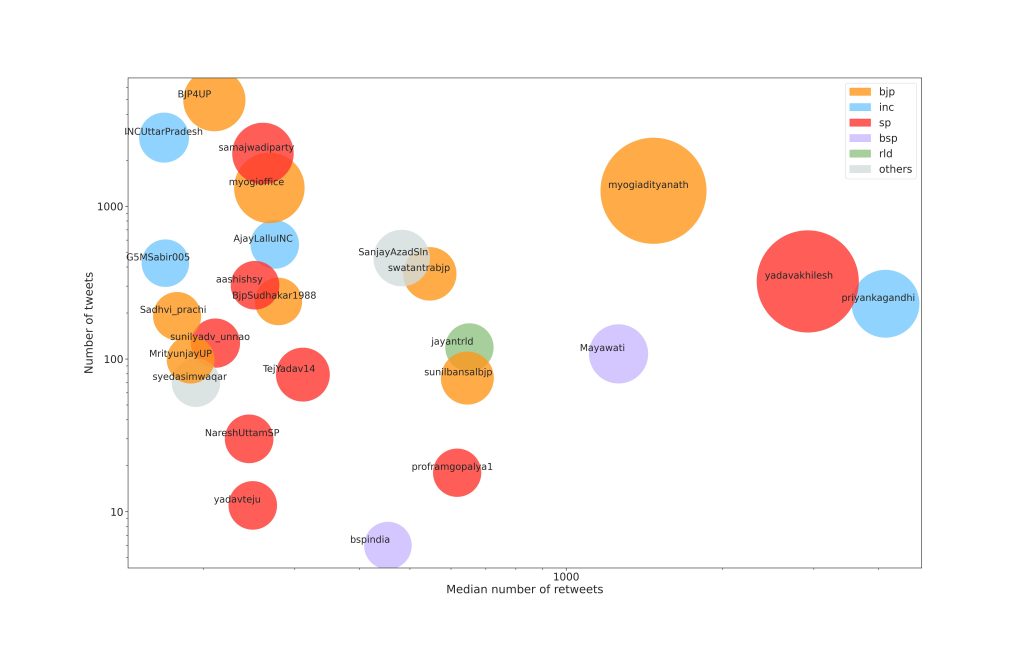
The visualization here gives us a sense of the key figures throughout the state. For one, we see that the BJP and SP dominate the most loquacious and engaged politicians on social media. While Priyanka Gandhi is the most retweeted politician (and is included in this sample because of her pivotal role in the INC’s UP contest), we can see that Akhilesh Yadav gets more retweeted than the Chief Minister Yogi Adityanath. BSP President Mayawati is the least active on Twitter from among the leaders of the four biggest players in the state. However, in terms of overall effect, the national footprint of the BJP, as well as the fact that several of its most important cabinet berths are from the state, including PM Modi, Rajnath Singh, Smriti Irani, it has a much bigger footprint through influential accounts.
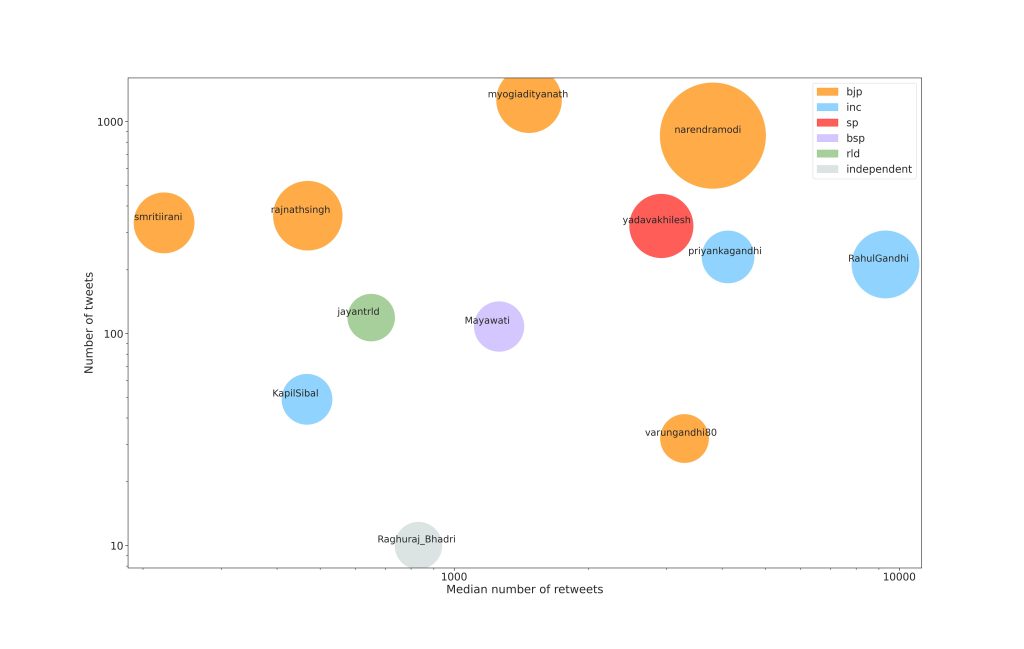
We see that other key players from the major parties are Sunil Bansal of BJP and Ram Gopal Yadav of SP. From among the smaller parties, Jayant Chaudhary of Rashtriya Loktantrik Dal is highly engaged, and Raghuraj Singh of the Jansatta Party is relatively inactive on Twitter, but is highly engaged when he tweets. For a closer look at visualizations of key players by party, see Gallery 1 below.
In the case of the Aam Aadmi Party, we see a fairly well-organized set up, with a very active party handle for the state, with key players being Sanjay Singh and Sabhajeet Singh, both of who play roles in the state’s election campaign. Likewise, the AIMIM, which has a fairly small presence in Uttar Pradesh, has major leaders like Asim Waqar and state in-charge Shaukat Ali are both active and highly engaged.
There are however a few key players, who are not very active or engaged on social media, irrespective of the hold their parties have over certain populations or pockets of the state. We see in Table 1 below that the BJP dominates all the other parties in terms of the presence of its politicians and karyakartas on Twitter, while the smaller parties like Apna Dal and Nishad Party have a fairly small presence online. Anupriya Patel, the president of Apna Dal, is the only leader from the party with a significant social media footprint, and the messaging from her own account is much more engaged than that from the party’s main handle. The Nishad Party, another BJP ally, has no significant social media footprint — its most engaged social media handle belongs to Sarvan Nishad, the son of the party president Sanjay Nishad.
| Party | # Twitter handles collected for UP politicians |
|---|---|
| Bharatiya Janata Party (BJP) | 5,047 |
| Samajwadi Party (SP) | 2,740 |
| Indian National Congress (INC) | 1,958 |
| Aam Aadmi Party (AAP) | 222 |
| Rashtriya Loktantrik Dal (RLD) | 172 |
| Bahujan Samaj Party (BSP) | 150 |
| Nishad Party (NP) | 53 |
| All India Majlis e Ittehadul Muslimeen (AIMIM) | 53 |
| Apna Dal (S) | 32 |
| Total # politician accounts analysed | 10,426 |
| Others (party information not annotated or independent) | 5,953 |
| Total sample size | 16,379 |
We see that as a result of the higher number of active BJP-related accounts, the party enjoys a much higher overall footprint of messaging. While there are no immediately evident patterns in Twitter activity, there is a gradual increase in the last month of Twitter activity among politicians. This aligns with the movement of the campaign into its final phase which, as one would expect, would have much higher daily activity.
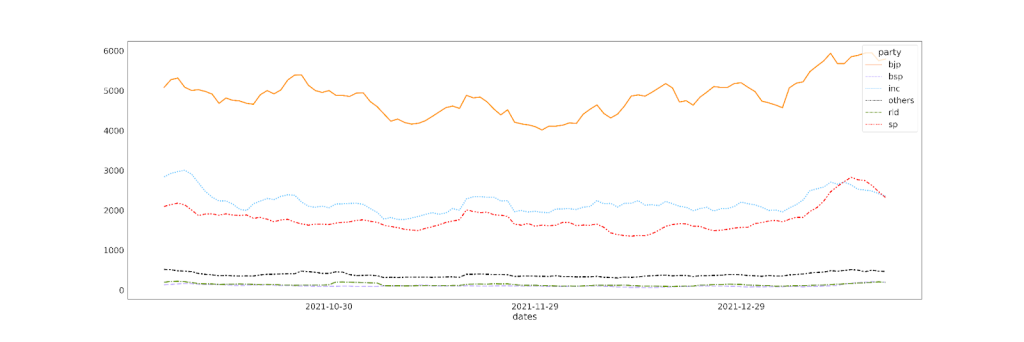
The sample of politicians was arrived at by starting with a seed set of Uttar Pradesh politicians from the NivaDuck database. Our definition of a politician includes a candidate or prior candidate for a party, or a self-described post-holder of any kind such as a party worker, or a self-described IT Cell member. We then used the Twitter API to find friends in their net of accounts confirmed as politicians belonging to Uttar Pradesh in the NivaDuck database. We iteratively repeated this process till we came to a list of accounts that were highly likely to be in politics on account of their networks. We thereafter searched for words that indicate an account belongs to a politician (“MLA”, “BJP”, “karyakarta” etc.) and words that suggest they are not (“journalist”, “media”, “parody” etc.). We examined each account for closeness to a network, under the assumption that most members of a party tend to cluster together (see Figure 4). We then manually annotated each account to confirm whether they were in fact a politician as defined here.
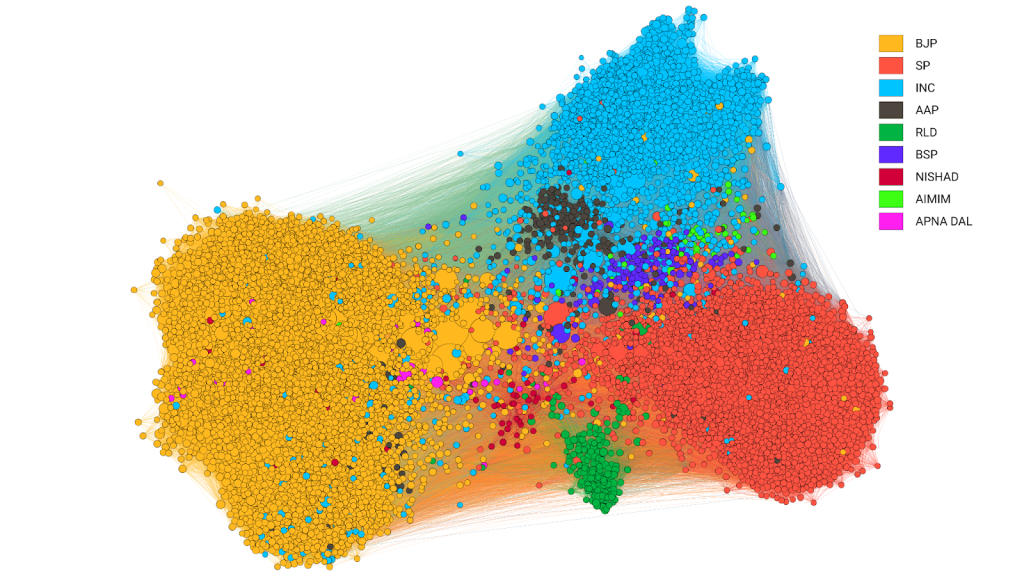
Personality over party
We see one consistent pattern in all the parties studied. In each case, the key leader of the party picks up a lot more attention and engagement than the key leader of the party. For instance, Akhilesh Yadav gets far more retweeted than the SP party handle, Adityanath likewise gets more engaged than the BJP4UP handle, Priyanka Vadra is more engaged than INC Uttar Pradesh, Mayawati more than the BSP handle, Jayant Chaudhary gets more engaged than the RLD handle, and so on. From among the party handles, the BJP has been the most active, while the BSP has been the least active.
Language
We see that contrary to claims in the past that Twitter was largely or predominantly used by English-speaking elites, we find that only 14% of the entire sample of tweets from politicians between October 2021 and January 2022 are in English. The overwhelming number of tweets are in Hindi, with the occasional use of other languages. Of all the parties examined, the INC uses the highest amont ot English in its tweeting. As is a pattern seen in other states as well, the parties that are primarily state based – BSP, SP, and RLD tend to tweet more frequently in the local language.
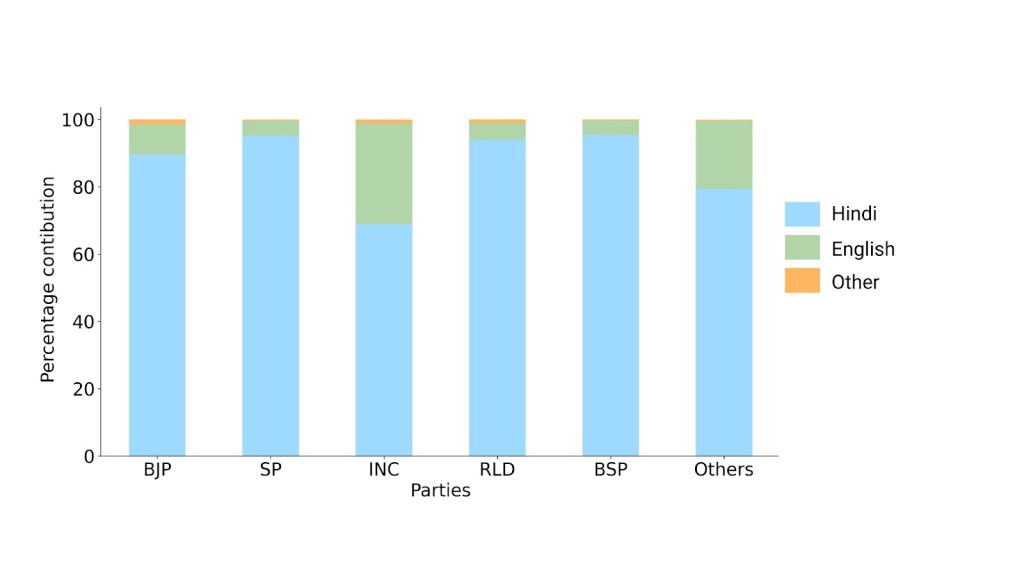
This research is being carried out by:
Jivitesh Jain*, Asmit Singh*, Lalitha Kameswari, Ponnurangam Kumaraguru, Joyojeet Pal
*Both Asmit Singh and Jivitesh Jain contributed equally to the research and writing of this report.
This report can also be accessed on Prof. Joyojeet Pal’s blog.
